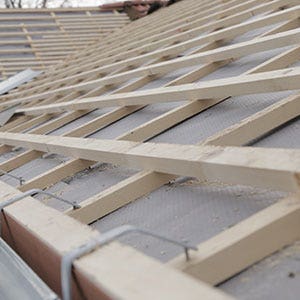
Roofing Batten
Roofing batten is integral to almost any pitch roof throughout the UK.
Roofing batten is a substantial timber structure which sits on top of the rafter allowing support and a nailing substrate for the material above. Any roofer needs a suitable roofing batten, so the roof structure is not weak. There are two central thicknesses of roofing batten in today's market: 25 x 38 & 25 x 50 (commonly referred to as 2 x 1).
The smaller of the two, 23 x 28, is predominantly used for smaller tiles like plain tiles. You will commonly find 25 x 38 batten used on dormer roofs fixed with 50mm wire nails. The 25 x 50 batten is used for the larger format tiles and slates due to their thickness allowing higher weight barring capabilities. The 25 x 50 batten will often be fixed 65mm stainless steel wire nails on roofs of lower pitch. In today’s building standards it is important you use treated batten. The batten treated will preserve the structural integrity, helping it last longer time frames, the roofing battens should be treated to reach the accordance with BS 8417. You can often spot the treated batten from the coloured red or blue dye used to a help distinguish the treated from untreated batten.
Considerations Before Purchasing Roofing Battern
JJ Roofing Supplies stocks and sells batten in multiple lengths. The main lengths we will have in stock is 3.6 metres; however, we do stock lengths as long as 4.8 metres and as short as 3.0 metres. JJ Roofing supplies recommend trying to avoid the 3.0 metres lengths unless specified. Shorter lengths of batten can be more hassle due to more connecting lengths needed for the width covering of the roof. If you are installing a brand new roof structure, it is essential to consider the rafter spacing, as battens should be fixed at most 600mm centres and span at a minimum of three rafters. Lastly, and perhaps the most important consideration one should make before purchasing your roofing batten is to make sure the batten meets the British standards BS5534.














